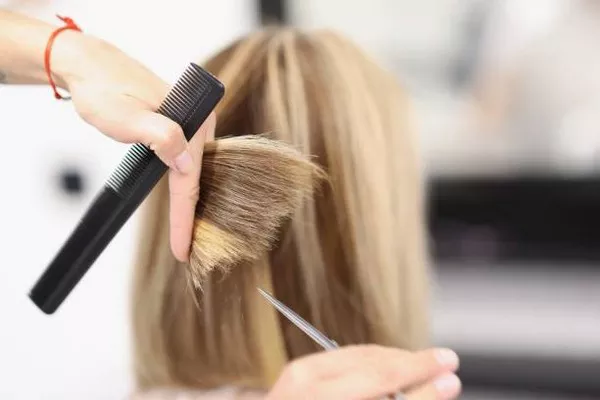The longstanding discrepancy in haircut pricing between women and men has ignited a debate about economic fairness and gender-based treatment in the hairstyling industry. While many women find themselves paying significantly more for similar services, a closer examination reveals that these disparities stem from entrenched industry practices and societal norms that may no longer be relevant.
Data reveals a stark divide. According to a recent CNN report, the average cost of a women’s haircut in the United States stands at $51.71, compared to $34.56 for men. In South Dakota, women pay up to $31.43, nearly one and a half times the $21.59 men spend on the least expensive haircuts. Similarly, a UK survey found that women paid an average of £31.99 ($40.80) for haircuts, more than double the £12.17 ($15.50) that men paid.
This price difference is often attributed to the perceived complexity of women’s haircuts. The National Hair & Beauty Federation (NHBF) argues that men typically require shorter, simpler haircuts. As NHBF chief executive Hilary Hall explains, “Men tend to have shorter hair and require haircuts which are technically quicker to deliver.” However, this rationale does not account for the fact that many women also opt for shorter, straightforward styles.
Personal experiences highlight the inconsistencies in gendered pricing. Academic Trish Greenhalgh’s visit to a local salon resulted in a £37 charge for a cut, while a male stylist later provided the same service for just £15. This raises a critical question: Should pricing be based on gender or the complexity of the service provided?
Beyond pricing, gender discrimination in salons also remains a concern. Numerous accounts of women being denied service at barbershops reflect an outdated notion that these establishments are male-only spaces. Actor Georgia Frost, for instance, was turned away from two barbershops with the statement, “we don’t do women here.”
Hair length complicates the discussion but not necessarily as expected. Karen Waldron, owner of the unisex chain Cut UK, emphasizes the need for flexibility. Her stylists are trained to handle various cuts regardless of the client’s gender. Waldron advocates for a more inclusive approach, stating, “It’s only in the last five years that I’ve allowed women who come in with an absolute man’s cut. We can’t be fussy any more now there are so many barber-shops.”
In response to these issues, some salons are adopting gender-neutral pricing models. Salons like Bee Sweet in Denver have eliminated gender-based pricing, focusing instead on the service and time involved. Stylist Dani Bee explains, “It has never made any sense to me that femmes and women have to pay more than men.” This shift aims to create a fairer and more welcoming environment for all clients, including nonbinary individuals.
Belgium’s hairdressing federation has proposed a pricing model based on time rather than gender, suggesting a rate of €1.30 (£1.10) per minute. This approach represents a shift toward valuing the service itself rather than adhering to outdated gender stereotypes. As salon owner Charlotte Jacob notes, “Whether you’re a man or a woman, you pay the same.”
Despite these progressive changes, some stylists remain resistant. Traditionalists argue that female grooming involves more complexity than male haircuts, while others, like stylist Hailey Grien, emphasize the time factor. Grien notes, “I can cut a men’s haircut in 15 minutes flat, whereas a woman, I could take 45 minutes to an hour tops.” While time may influence cost, this perspective reinforces the outdated notion that longer hair automatically warrants higher prices based on gender.
The practice of gendered pricing in salons is a manifestation of the broader “pink tax,” where products and services marketed towards women often come with higher price tags than their male equivalents. This issue extends beyond haircuts, questioning gender equity across various consumer goods and services.
Addressing these discrepancies can have broader social implications, advancing the conversation about gender equality. By eliminating the practice of charging women more for haircuts based solely on gender, society moves closer to leveling the economic playing field. Such changes encourage discussions about merit-based pricing and the rejection of outdated gender roles.
While some women value the unique amenities offered by salons catering specifically to them, others express frustration over the higher costs. This ongoing dialogue is essential, particularly considering the economic impact of unequal pricing practices.
As consumers, advocacy groups, and businesses continue these critical conversations, the goal remains to create a more equitable future in hairstyling. The industry’s evolution toward gender neutrality is a step toward embracing modern values of equality and respect for all clients, regardless of gender identity.
Ultimately, fair pricing for haircuts should be based on the time and skill required, not the gender of the person receiving the service. By fostering inclusivity, the beauty industry can move away from outdated practices and embrace a new standard that celebrates individuality without the burden of societal expectations influencing costs.


